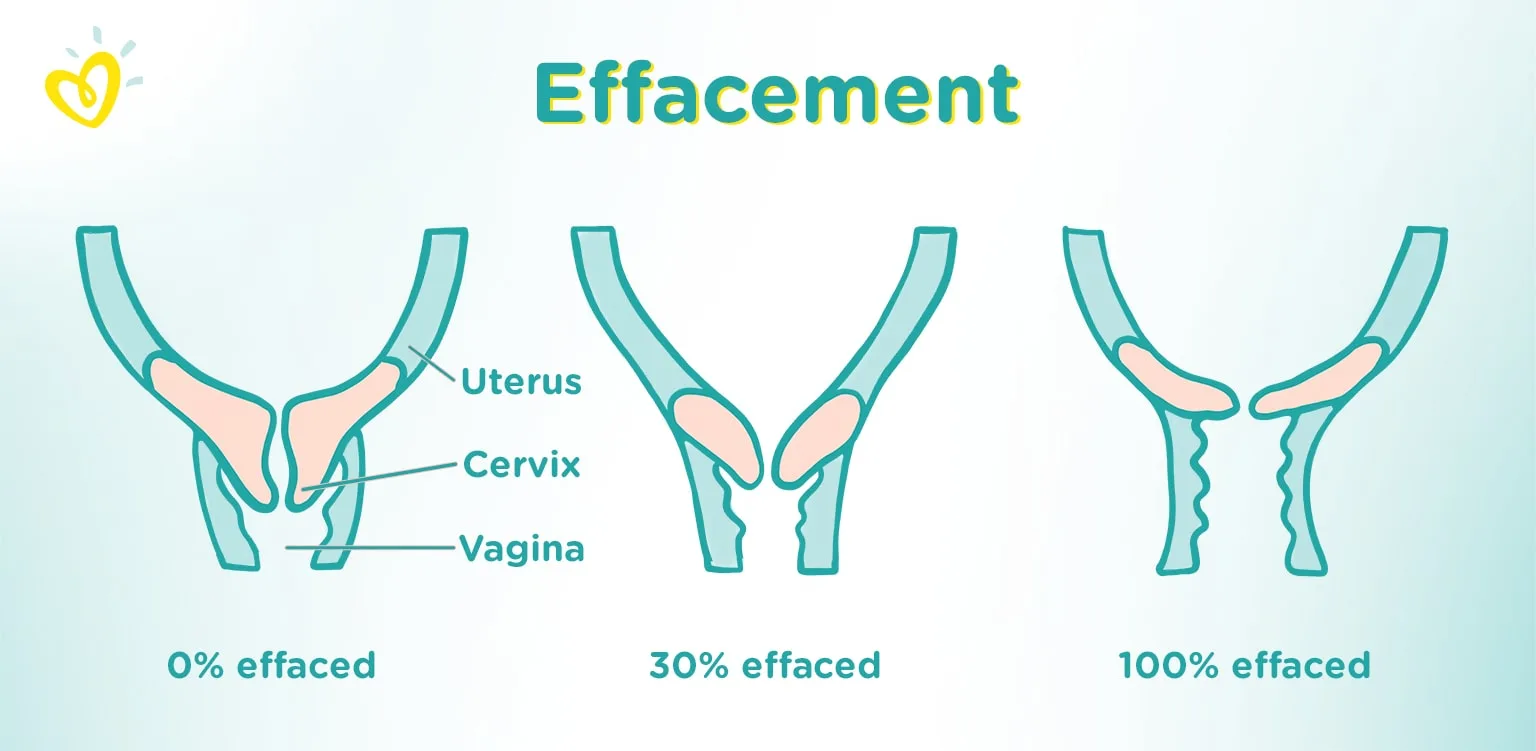What is Cervical Effacement?
While you’re mentally and emotionally preparing for labour, your body is also getting ready. For example, you might have experienced Braxton Hicks practice contractions—your body’s way of getting ready for true labour contractions. Once true labour contractions actually start, your cervix will then also start preparing for when you deliver your baby. This process is described with the terms effacement (thinning) and dilation (opening).
Read on to learn more about effacement and its role in childbirth to help you better understand the amazing things your body does to help you every step of the way.
What Does Effaced Mean?
To understand what it means to be effaced, it's worth going over some anatomy. Your cervix is the long, narrow end of the uterus, located at the top of the vagina—it’s actually the opening to the uterus. Normally, your cervix is closed, firm, and elongated (between 3.5 and 4 centimeters long). When you go into labour, the cervix thins out and becomes softer and shorter. This is called effacement. It’s measured in percentages from 0 to 100 percent, the latter of which means you’re fully effaced.
Your healthcare provider will be checking how effaced you are via a vaginal exam. It’s not anything that you yourself can check. Nor is it something you need to worry about; your provider will be keeping an eye on you.
What Does It Mean to Be 50 Percent Effaced?
During labour, you might hear your healthcare provider say something like, “You’re 50 percent effaced.” This simply means that your cervix has thinned out to 50 percent of what is considered fully effaced. So, if you hear your healthcare provider say this, you are half way to 100 percent effacement.
What Does It Mean to Be 80 Percent Effaced?
If you’re 80 percent effaced, your cervix is 80 percent thinned and you’re nearing 100 percent effacement.
What Is Cervical Effacement?
To explain what effacement is, you need to know a bit about the first stage of labour, which is broken up into two phases, early labour and active labour. During early labour you’ll start to experience contractions. This is when the muscles of your uterus tighten at regular and increasingly frequent intervals. Contractions cause your cervix to go through the process of effacement and dilation. This process continues, usually very slowly, until you are in active labour, when the process of effacement and dilation speed up.
How Does Dilation Differ From Effacement?
Unlike effacement, which is when your cervix shortens and thins out (measured in percentages), dilation is the term used to describe the opening or widening of the cervix. This is measured from 0 to 10 centimeters, the latter of which means you’re fully dilated.
Your healthcare provider will check both effacement and dilation during labour to see how far along you are. The cervix should be 100 percent effaced and 10 centimeters dilated before a vaginal birth.
Just to give you an idea of how long dilation takes: Once you've begun active labour, the average rate is one centimeter of dilation per hour. Of course, labour and childbirth are unique for every mom-to-be, so this is just an estimate. If your healthcare provider feels that your labour has stalled or that you or your baby may be in distress, she may recommend a cesarean section.
Do Braxton Hicks Contractions Cause Effacement?
If you experience some occasional and irregular contractions in the last few months of your pregnancy, it doesn’t mean that you are going into labour, and that your cervix has started to efface or dilate. It could be that you’re experiencing Braxton Hicks contractions, which are often called “practice” or “false” contractions. Braxton Hicks do not cause any change to your cervix. Think of Braxton Hicks as a practice run, and as one of the ways your body is preparing for the real thing.
If you’re unsure whether you’re experiencing Braxton Hicks or real labour contractions, time your contractions and speak to your healthcare provider.
FREQUENTLY ASKED QUESTIONS
Effacement is not a sign of labour that you’ll be looking out for, but it is a physical change that gives your healthcare provider important information about how far along you are. And although it’s good to be informed about all the ins and outs of labour and childbirth, it’s also reassuring to know that your provider is on top of these kinds of details, so you can stay focused and relaxed. You’ll soon be meeting your little one, and all of this won’t matter.
Did you know, there’s an app that rewards you for all your diaper purchases? Download the Pampers Club app to get started.
How we wrote this article
The information in this article is based on the expert advice found in trusted medical and government sources, such as the American Academy of Pediatrics and the American College of Obstetricians and Gynecologists.
The content on this page should not replace professional medical advice. Always consult medical professionals for full diagnosis and treatment.
Join Pampers Club and get:





